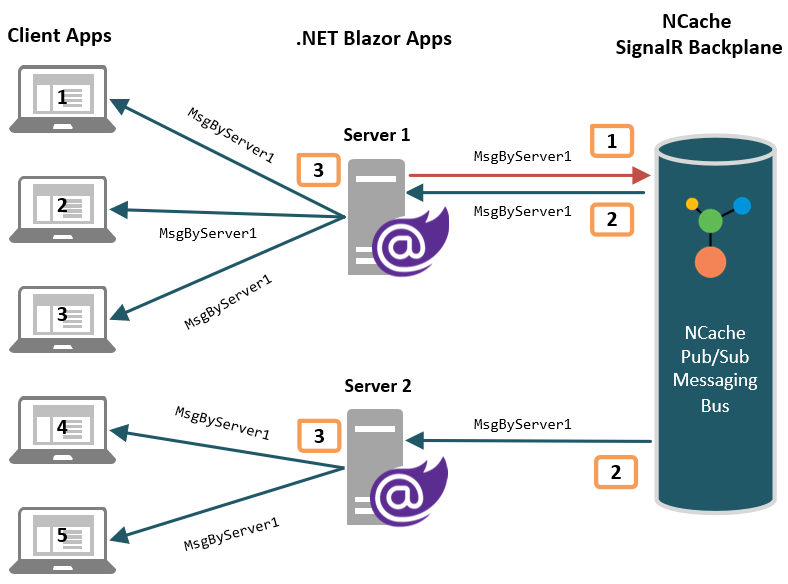Blazor is being adopted rapidly by organizations looking to create interactive Web UIs with .NET. It allows you to create the applications using C# instead of undergoing the hassle of JavaScript and all your server-side and client-side logic is consolidated in the .NET space.
Blazor uses the ASP.NET Core SignalR implementation for messaging between client and servers. Since it is in the same process, it cannot be scaled once the number of transactions becomes high or the client load increases on the servers. Moreover, it cannot be used as a backplane in a load balanced environment. For real-time and multi user applications, this can become a bottleneck.
At NCache, we have been receiving requests regarding NCache support with Blazor apps. Yes, NCache can be easily integrated into your Blazor applications. NCache is an in-memory distributed cache that implements ASP.NET / ASP.NET Core SignalR Backplane for high traffic, real-time, web applications. Being distributed, it can scale to handle increasing requests and does not become a bottleneck. Moreover, NCache SignalR uses powerful Pub/Sub messaging features to send messages from one web server to another. Figure 1 illustrates how NCache fits into your Blazor application as a SignalR Backplane:

Figure 1: Using NCache as SignalR Backplane in .NET Blazor Applications
To make it simpler, we have used the Blazor SignalR sample implementation by Microsoft, and integrated NCache as a SignalR backplane in the existing application. Our running implementation for Blazor using NCache SignalR backplane is uploaded at GitHub.
Using NCache SignalR Backplane in Blazor
Integrating NCache as SignalR Backplane is very simple and barely requires any code change to your existing Blazor application.
Step 1: Create Cache
For your Blazor apps to use NCache, you need to create a cache that will act as a SignalR backplane. Download and install NCache as explained in Installation Guide. You can create and start cache using either of the following NCache management tools:
For this application, we have created a cache named “blazor” that will be used in our Blazor application.
Step 2: Configure NCache as SignalR Backplane
In Startup.cs of your Blazor application in the BlazorSignalRApp.Server project, you need to add the following lines to configure NCache as SignalR Backplane, and that is it:
NCache Details Blazor App with NCache NCache SignalR Docs
Why NCache?
If your Blazor application is high traffic and running in a load-balanced multi-server web farm, then using NCache as a SignalR Backplane for your applications provides you the following benefits:
- .NET Pub/Sub Messaging: NCache is a feature-rich distributed cache and offers robust Pub/Sub messaging capabilities. SignalR Backplane uses these messaging features in NCache to send messages to other servers in the web farm.
- 100% .NET / .NET Core Cache: Being a native .NET distributed cache, NCache fits seamlessly into your ASP.NET / ASP.NET Core application stack and reduces your cost of development and maintenance.
- Extremely Fast & Scalable: NCache is in-memory, that makes it extremely fast. Its distributed nature provides linear scalability, due to which it never becomes a bottleneck for your Blazor application performance even under peak loads.
- High Availability: NCache provides peer-to-peer clustering architecture that is dynamic and self-healing and has no single point of failure.
- Support for Groups and Users: Using NCache as a SignalR backplane facilitates sending messages to SignalR groups which are collections of associated connections. Moreover, using NCache as the message bus, you can also send messages to all connections associated with a particular SignalR user.
Conclusion
Using NCache as a SignalR Backplane in your Blazor apps is a very seamless process. You only need to configure NCache as a SignalR backplane in your existing Blazor application with 2 lines of code and the rest is handled by NCache itself. With Blazor’s ease of use and NCache integration, you can guarantee a smooth experience.






